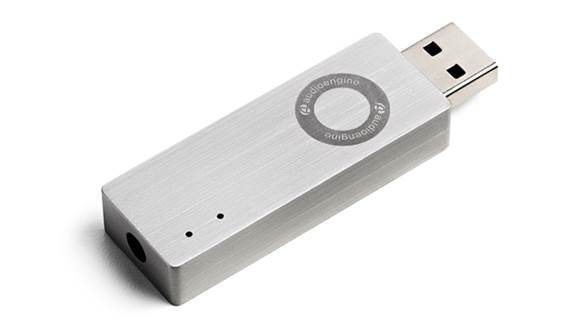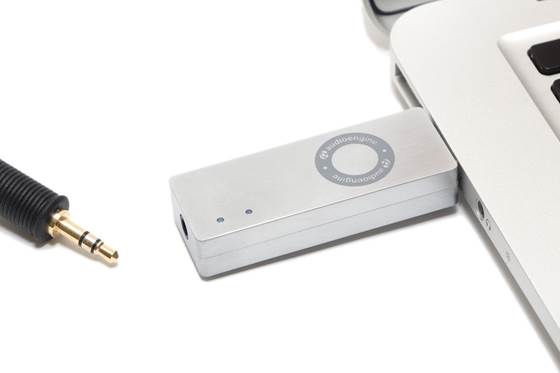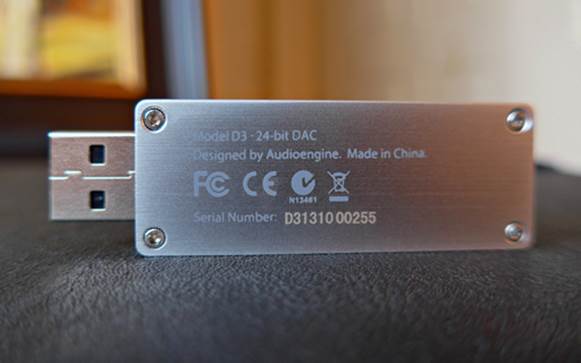If you’ve got your music stored on a laptop, you owe
it to your tunes to get a portable DAC. Your headphones will thank you
If you listen to music stored on a laptop or a desktop
computer, there’s a good chance your PC’s internal DAC and headphone output can
be bettered by a device more suited to the task. This is where a portable
DAC/headphone amp comes in handy, taking over the bulk of the sonic work from
your computer and ensuring you’re getting the best possible performance. Here
are four affordable, portable superstars, which will take any computer-based
music to the next level...
Audio-engine
Clad in an aluminum case, held together by the tiniest of
bolts, the D3 looks and feels like a solid little unit with a robust case that
resists any attempts to flex it out of shape. Trying to magic what to many
people is simply a USB stick into an attractive piece of hi-fi equipment is no
mean feat. But the D3 gives it a jolly good go.

Audio-engine D3
We’re slightly disappointed, though, that there is no
matching aluminum end-cap to protect the USB connector when it’s out in the
open, or in your pocket. The D3 does at least come with its own woolly carry
pouch – perfect for keeping it warm in the cold winter months if nothing else.
Also in the box is a brief yet easily understandable set-up
guide and an adapter cable for making the D3’s 3.5mm output compatible with
headphones that use a 6.3mm connector. We listened to the D3 using a pair of
AKG K550s over-ears and a pair of Klipsch X7i in-ears.
Can deal with high-res audio
This Audio-engine is compatible with Apple Macs and Windows
computers, and, unlike some, it doesn’t need any additional drivers for
Windows. Like the AudioQuest DragonFly v1.2, the D3 can play sample rates up to
24-bit/96kHz natively – the computer will have to downsample 24-bit/192kHz
music files to 24/96 for the D3 to be able to play them. The D3 also allows for
the asynchronous movement of data between your computer’s USB output and the
Audio-engine, for supposedly improved sound performance.

Audio-engine D3
On the face of the stick there are two tiny indicators. The
outer one glows blue when the Audio-engine is being used with tracks boasting a
sample rate of 88.2kHz and above. Otherwise, the indicator remains unlit. The
inner light glows white simply to show that the DAC is powered up and ready to
receive data.
Unlike the Cambridge Audio DacMagic XS, but like the
AudioQuest DragonFly v1.2, the D3 does without any external volume controls.
Instead, it uses the control on your music-playing software.
Decent detail and impact
Play a WAV rip of Eminem’s Bad Guy and the D3 extracts a
fair level of detail from the track. The device favors a direct, unfussy sound.
The track’s brooding bass notes hit with a decent sense of impact, and the
claps that litter the track sound precise and well-defined – although the
emotion in Eminem’s voice doesn’t come across quite as convincingly as it does
when heard through the AudioQuest.

Audio-engine D3
We’d like a bit more subtle detail and texturing of notes
too. There’s a lack of refinement to the general sound, which takes some of the
gloss and joy out of the music.
The device favors a direct, unfussy sound. Bad Guy by
Eminem’s brooding bass notes hit with a decent sense of impact, and the claps
in the track sound precise and well-defined.
We play Lily Allen’s Christmas cover of Somewhere Only We
Know, and while the delicate piano play and her sweet vocal sound focused and
distinct, the D3 doesn’t manage to make things sound as natural or believable
as they do via the DacMagic XS. The tune doesn’t display the same sonic
subtleties, nor does it have the same emotional impact as when the piece is
played via the DragonFly, either.
The Audio-engine is a solid little device, but sonically it
fails to grab your attention and make enough of a lasting impression. And, when
you consider the D3’s isn’t the cheapest of its kind, this leaves it lagging
behind the pack leaders.
|
specifications
·
Full-scale output: 2.0V RMS
·
Frequency response: 10Hz – 25kHz
·
Input: USB Audio
·
Output: Analog audio mini jack
·
Power: USB 5V DC, 200mA
·
Headphone amplifier: LME49726
·
Weight: 0.5kg
·
Dimensions: 6.5 x 2 x 1 cm
|